
Robert Schumann was a German composer, pianist, and music critic of the early Romantic era. He composed in all the main musical genres of the time, writing for solo piano, voice and piano, chamber groups, orchestra, choir and the opera. His works typify the spirit of the Romantic era in German music.

Clara Josephine Schumann was a German pianist, composer, and piano teacher. Regarded as one of the most distinguished pianists of the Romantic era, she exerted her influence over the course of a 61-year concert career, changing the format and repertoire of the piano recital by lessening the importance of purely virtuosic works. She also composed solo piano pieces, a piano concerto, chamber music, choral pieces, and songs.
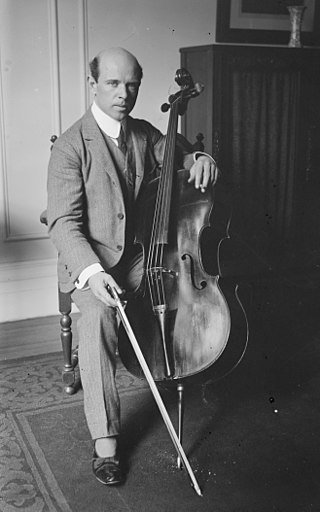
Pau Casals i Defilló, known in English by his Spanish name Pablo Casals, was a Spanish and Puerto Rican cellist, composer, and conductor. He made many recordings throughout his career of solo, chamber, and orchestral music, including some as conductor, but he is perhaps best remembered for the recordings he made of the Cello Suites by Bach. He was awarded the Presidential Medal of Freedom in 1963 by President John F. Kennedy.

Carl Philipp Emanuel Bach, also formerly spelled Karl Philipp Emmanuel Bach, and commonly abbreviated C. P. E. Bach, was a German Baroque and Classical period composer and musician, the fifth child and second surviving son of Johann Sebastian Bach and Maria Barbara Bach.

Artur Schnabel was an Austrian-American classical pianist, composer and pedagogue. Schnabel was known for his intellectual seriousness as a musician, avoiding pure technical bravura. Among the 20th century's most respected and important pianists, his playing displayed marked vitality, profundity and spirituality in the Austro-German classics, particularly the works of Beethoven and Schubert.
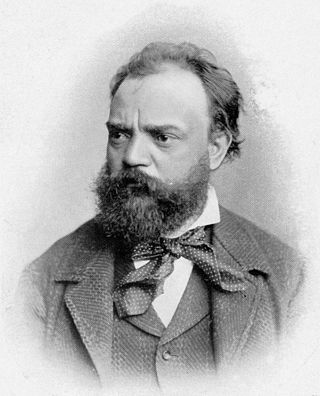
Antonín Leopold Dvořák was a Czech composer. He frequently employed rhythms and other aspects of the folk music of Moravia and his native Bohemia, following the Romantic-era nationalist example of his predecessor Bedřich Smetana. Dvořák's style has been described as "the fullest recreation of a national idiom with that of the symphonic tradition, absorbing folk influences and finding effective ways of using them," and Dvořák has been described as "arguably the most versatile... composer of his time".
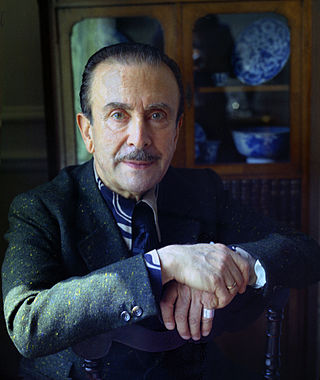
Claudio Arrau León was a Chilean and American pianist known for his interpretations of a vast repertoire spanning the baroque to 20th-century composers, especially Bach, Mozart, Beethoven, Schubert, Chopin, Schumann, Liszt and Brahms. He is widely considered one of the greatest pianists of the twentieth century.

Joseph Joachim was a Hungarian violinist, conductor, composer and teacher who made an international career, based in Hanover and Berlin. A close collaborator of Johannes Brahms, he is widely regarded as one of the most significant violinists of the 19th century.

Freiherr Hans Guido von Bülow was a German conductor, pianist, and composer of the Romantic era. As one of the most distinguished conductors of the 19th century, his activity was critical for establishing the successes of several major composers of the time, especially Richard Wagner and Johannes Brahms. Alongside Carl Tausig, Bülow was perhaps the most prominent of the early students of the Hungarian composer, pianist and conductor Franz Liszt; he gave the first public performance of Liszt's Sonata in B minor in 1857. He became acquainted with, fell in love with and eventually married Liszt's daughter Cosima, who later left him for Wagner. Noted for his interpretation of the works of Ludwig van Beethoven, he was one of the earliest European musicians to tour the United States.

Julius Engelbert Röntgen was a German-Dutch composer of classical music. He was a friend of Liszt, Brahms and Grieg.
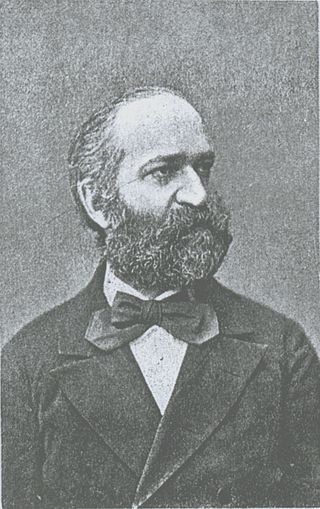
Ferdinand Thieriot was a German composer of Romantic music and a cellist.

August Max Fiedler was a German conductor and composer, He was noted as an interpreter of Brahms.
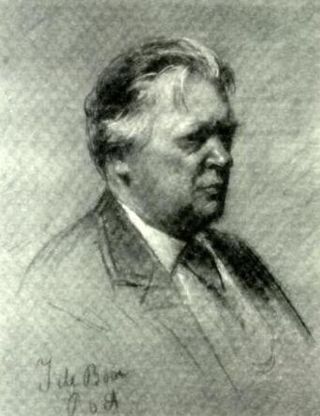
Fürchtegott Theodor Kirchner was a German composer and pianist of the Romantic era.

Aloys and AlfonsKontarsky were German duo-pianist brothers who were associated with a number of important world premieres of contemporary works. They had an international reputation for performing modern music for two pianists, although they also performed the standard repertoire and they sometimes played separately. They were occasionally joined by their younger brother Bernhard in performances of pieces for three pianos. After suffering a stroke in 1983, Aloys retired from performing.

D-274 is the model name of a concert grand piano, the flagship of the Steinway & Sons piano company, first built in 1884. It is generally described as the first choice of most concert pianists. As of 2017 a D-274 finished in Polished Ebony has a MSRP of US$175,700.

Anna Borysivna Fedorova is a Ukrainian concert pianist. Fedorova performs as soloist, chamber musician and with symphony orchestras in the major concert halls of the Netherlands, Germany, France, Italy, UK, Ukraine, Poland, the US, Mexico, Argentina, and parts of Asia. Fedorova is a David Young Piano Prize Holder supported by a Soiree d'Or Award and Keyboard Trust.

Louise Japha was a German pianist and composer.

The NDR Chor is the choir of the German broadcaster Norddeutscher Rundfunk (NDR), based in Hamburg. It was founded in 1946, with Max Thurn as the first director of then 55 singers. The group has participated in premieres of contemporary music, such as the posthumous concert premiere of Schoenberg's opera Moses und Aron. It is also known for a capella music, introduced by Helmut Franz such as a recording of all such works by Johannes Brahms. The current artistic director is Philipp Ahmann, who has held the position from 2008. NDR Chor, now a group of 28 singers, is one of the leading professional chamber choirs in Germany.

Robert Schumann House is a museum in Zwickau in Germany. The composer Robert Schumann was born here in 1810; it now houses a large collection relating to the composer.
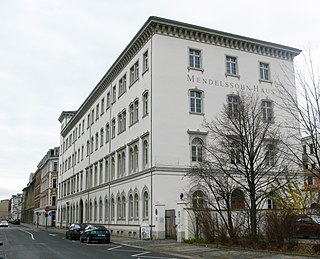
Mendelssohn House is a museum in Leipzig in Saxony, Germany. The composer Felix Mendelssohn lived here from 1845 until his death in 1847; it now contains a collection about the life and work of the composer.



























